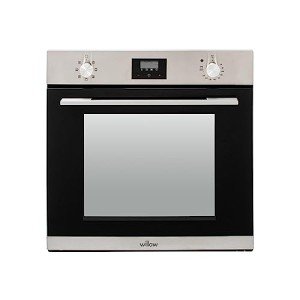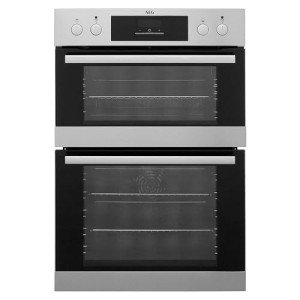Guide To Builtin Ovens: The Intermediate Guide Towards Builtin Ovens
페이지 정보

본문
The Rise of Built-in Ovens: Enhancing Modern Kitchens
In the ever-evolving world of home enhancement, built-in ovens have emerged as a staple in contemporary kitchen design. These appliances not just provide a smooth and seamless aesthetic but also contribute substantially to the performance and performance of home cooking. This article explores the numerous aspects of built-in ovens, including their benefits, types, installation factors to consider, and maintenance, together with frequently asked questions to supply a thorough summary.
What is a Built-in Oven?
A built-in oven is an appliance created to be set up into kitchen cabinets, providing it a streamlined appearance and maximizing counter space. Unlike conventional freestanding ovens, which stand alone and are typically bulky, built-in ovens fit flush with kitchen cabinetry for a more integrated ovens look. They are offered in different sizes, designs, and functions, accommodating a broad range of culinary needs and kitchen designs.
Advantages of Built-in Ovens
Built-in ovens featured many benefits that make them appealing to homeowners. Below are some of the crucial benefits:
- Space Efficiency: Built-in ovens conserve counter space while optimizing kitchen layouts.
- Customizable Design: They can be integrated ovens and hobs into cabinetry, permitting property owners to customize aesthetic appeals according to personal taste.
- Improved Performance: Many built-build in oven ovens come equipped with advanced cooking innovations, enabling much better heat distribution and faster cooking times.
- Ease of access: Their setup at eye level makes it simpler to examine food without bending down, offering higher benefit and security.
- Resale Value: A contemporary, well-designed kitchen can enhance residential or commercial property worth, making built-in ovens an investment worth considering.
Types of Built-in Ovens
Built-in ovens can be classified based on their style and function. The following list outlines the common types of built-in ovens available on the market:
- Single Ovens: A standard model that includes one cooking compartment.
- Double Ovens: These included 2 different compartments, which permit cooking multiple meals at various temperatures.
- Wall Ovens: Installed into the wall for a space-saving service, these ovens use convenience and ease of access and can be either single or double.
- Steam Ovens: These make use of steam for damp cooking and are typically favored for much healthier meal preparation.
- Convection Ovens: Designed with a fan that distributes hot air, guaranteeing even cooking and browning.
| Type | Description | Perfect For |
|---|---|---|
| Single Oven | One cooking compartment for basic baking and roasting. | Little families and cooking areas. |
| Double Oven | Two compartments for simultaneous cooking of different dishes. | Large families with varied menus. |
| Wall Oven | Built into the wall for simple gain access to. | Space-conscious cooking areas. |
| Steam Oven | Cooks utilizing steam for much healthier alternatives. | Health-conscious individuals. |
| Convection Oven | Circulates hot air for even cooking and quicker outcomes. | Baking lovers and chefs. |
Installation Considerations
Selecting to set up a built-in oven includes numerous factors to consider to ensure that it fits seamlessly within the kitchen. Important aspects include:

- Cabinet Dimensions: Accurate measurement of the cabinet area required for the oven is crucial for a proper fit.
- Power Supply: Built-in ovens typically require a dedicated power supply; speaking with a certified electrical expert might be required.
- Ventilation: Ensure that the oven's ventilation requirements are satisfied to promote safe operation.
- Regional Building Codes: Compliance with local codes is necessary when installing any kitchen appliance.
It's strongly suggested that installation be carried out by specialists to guarantee safety and adherence to producer specifications.
Maintenance of Built-in Ovens
Preserving built-in ovens is important to guarantee their longevity and operation. Below are some ideas for efficient upkeep:
- Regular Cleaning: Wipe down surfaces after each usage to avoid accumulation; think about self-cleaning alternatives if readily available.
- Examine Seals: Inspect the oven door seals routinely for wear and tear to keep effectiveness and prevent heat loss.
- Adjust Temperature: Occasionally check and adjust oven temperature settings if cooking results are inconsistent.
- Expert Servicing: Schedule routine upkeep with qualified specialists for electrical parts and deeper cleansing.
Frequently Asked Questions (FAQs)
Q1: How do I pick the ideal size built-in oven for my kitchen?
A1: Measure the offered cabinet area and consider the cooking routines of your household. Single or double ovens are common options based upon meal preparation requirements.
Q2: Are built-in ovens more energy-efficient than freestanding ones?
A2: built in oven-in builtin ovens (click to investigate) can be more energy-efficient due to much better insulation and advanced cooking innovation; however, real performance depends upon the particular design and use.

Q3: Can built-in ovens be set up throughout the kitchen?
A3: Built-in ovens require particular cabinets and may need a dedicated source of power, so planning their positioning carefully within the kitchen design is important.
Q4: What type of maintenance do built-in ovens need?
A4: Regular cleansing, inspecting door seals, adjusting temperature levels, and expert servicing as needed are all elements of appropriate upkeep.
Built-in ovens are a remarkable addition to modern-day kitchens, using both aesthetic and practical advantages. Their space-saving design, customizable options, and advanced features deal with diverse cooking requirements. When considering a built-in oven, house owners must consider their specific cooking choices, kitchen design, and upkeep abilities. By doing so, they would be making an important financial investment in their home, increasing both functionality and builtin ovens style.
- 이전글12 Companies Leading The Way In Getting A Car Key Cut 25.05.21
- 다음글Guide To Large Integrated Oven: The Intermediate Guide Towards Large Integrated Oven 25.05.21
댓글목록
등록된 댓글이 없습니다.